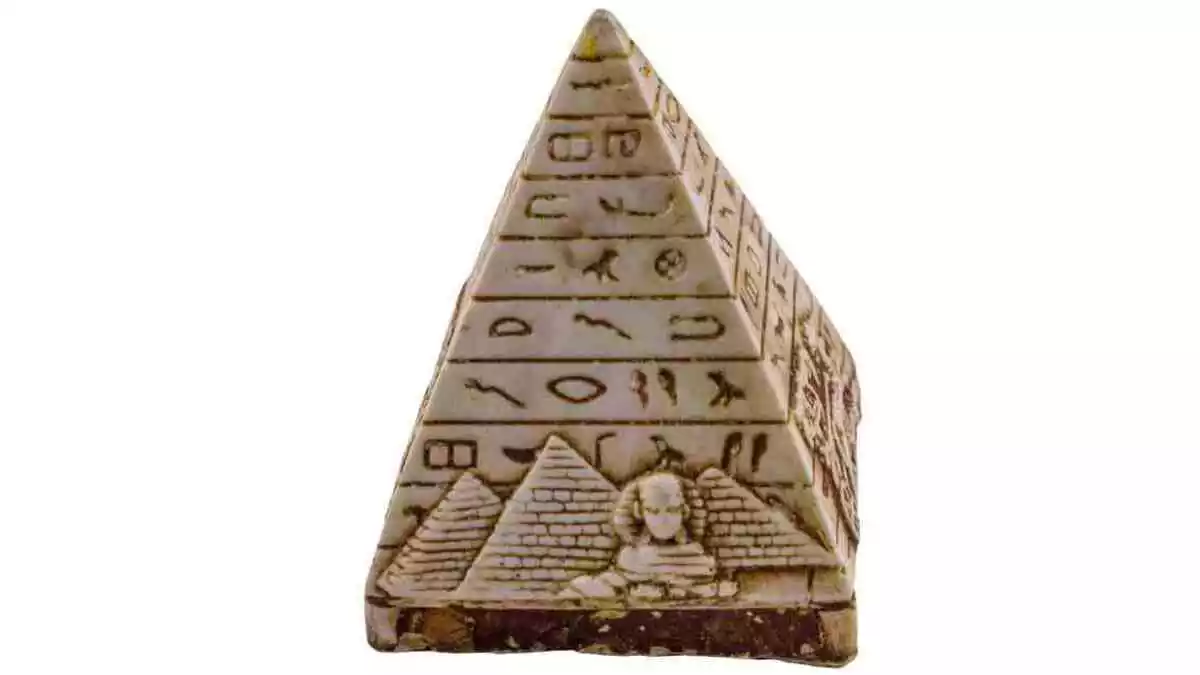
For Ancient Egyptians, hieroglyphic writing was considered the gods' language. The phrase 'the gods' language' was written with a flag, a stick and three vertical lines, due to its combination of characters, phonograms and determiners. Curious, isn't it? Well, don't miss out on this article and you'll find many other amazing things about Egyptian hieroglyphics, the first written system in history.
What are Egyptian hieroglyphics?
Egyptian hieroglyphs are a written system used by Ancient Egyptians from the pre-dynasty era up to the 4th century. That's why it is one of the oldest written systems, and since its discovery and decoding from later cultures, Egyptian hieroglyphics have reached our day and age and arised much fascination in the process.
Among other things, Egyptian hieroglyphics were considered 'the gods' language', because they were thought to be a gift to men from Thoth, the Egyptian god of knowledge. That is why one of their main functions was to allow the deceased to travel to the Great Beyond through the representation of hieroglyphs in tombs and funeral monuments.
But not only that. Pharaohs used hieroglyphics to pass down their laws and leave noted records of their achievements. Therefore, this form of writing has also been found on tablets and scrolls. In that sense, one of the main figures among royal servants were scribes, who formed a true worker base with specific training.
Hieroglyphic writing was the first written language in history. Because of its difficulty in interpretation, it is thought that only priests, army officers, pharaohs and scribes could read it. It was written vertically and horizontally, but never from the bottom up. To understand how it worked, here's all the intel.
The Rosetta Stone and the ins and outs of hieroglyphic writing
From its origins in 3000 B.C. up to the 4th century, hieroglyphics were used in Ancient Egypt for thousands of years and suffered several changes. The meaning of this ancient language remained a mystery for later cultures, until 1799, when an expedition led by Napoleon found the Rosetta Stone.
This granite-like stone was key to decipher Egyptian hieroglyphics, because it had the advantage of including three forms of writing in one single text: the upper part was hieroglyphic writing, the middle was Demotic script, and the lower area was Ancient Greek.
Originally, the stone was inside a temple, but it was them moved as a building stone near the town of Rosetta, by the Nile Delta. The French soldier Pierre-François Bouchard found it during the Egypt military campaign, although it was brought into the British Museum in 1802 after the English victory.
Its triple writing soon arose the interest of egyptologists, who saw a chance to decode the mysterious Egyptian hieroglyphs for the first time. After a first translation of the Greek text in 1822, Jean-François Champollion announced in Paris that the hieroglyphic text had been decoded.
Hieroglyphics and Egyptian symbols: how to read hieroglyphics
Hieroglyphics derive from pictography, the representation of items based on drawings. That means that writers attempt to express ideas through the representation of well-known objects in nature and daily life.
It is calculated that hieroglyphic writing contained up to 750 symbols and was structured around three main elements. Characters created a direct relationship between the symbol and its meaning: a cat meant a cat. Phonograms were sound representations, both syllabic and alphabetical. And determiners worked to point to the meaning of symbols with more than one definition.
In order to read an Egyptian text, it is basic to be first acquainted with the figure manual that divides the 750 Egyptian symbols into 26 different groups (animals, body parts, deities, nature elements, etc.). As centuries went by, writing changed and symbols increased, as well as their complexity.
Through the combination of characters, phonograms and determiners comes a complex system that demands careful reading of texts.
For instance, a duck can only represent a duck; but when it comes with the Sun, it becomes "son of Ra", and it can include the name of a pharaoh. In the same way, as a phonogram, a duck is the joining of letters S and A, and it can be part of a sequence that has nothing to do with ducks or kids.
Another example: the staff means "word", while the flag guarding the doors of temples represents anything sacred. Thus, a staff with a flag in front of it meant "the word of God", and if it was followed by three vertical lines, the word was plural.
Today we know that there is an equivalence between our alphabet and the symbols of hieroglyphic writing. Therefore, for instance, letter A equalled an eagle, while the back of the left hand represented letter E, and a pot represented C. Curious, right? Even so, we don't know how Ancient Egyptian was pronounced.
The mystery of Abidos' hieroglyphics
Certain hieroglyphic writings have brought on a true mystery challenge for researchers. More specifically, the renowned Abidos hieroglyphs, placed at the temple of pharaoh Seti I, in High Egypt, have opened up questions that challenge all logical thinking, because the characters include modern ships, helicopters and even submarines. How could they represent these items out of their natural time?
Right away, the craziest of theories started to come up: ranging from the fact that Ancient Egypt was the most advanced civilisation that has existed up to now, all the way to them having contact with aliens. According to this last theory, more advanced civilisations from other worlds visited Egyptians and showed them their advanced devices.
However, those that are more sceptical try to find a logical answer to this mystery: the Abidos hieroglyphs aren't ooparts (objects out of their time) but a strange combination of common symbols in Egyptian code. That would be due to an exceptional innovation in writing; or what's more likely to happen, several modifications within one single text.
